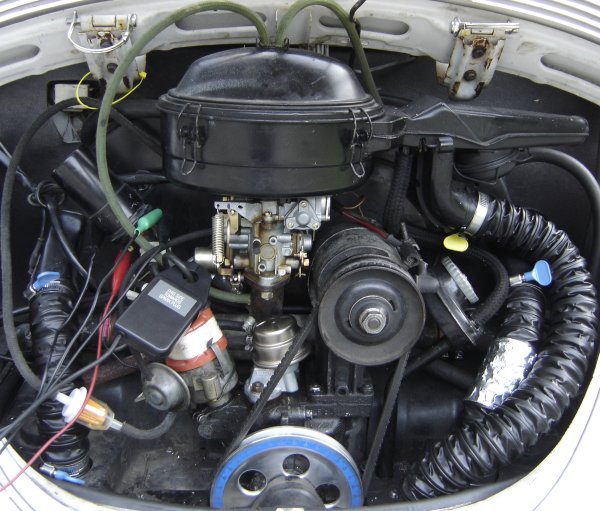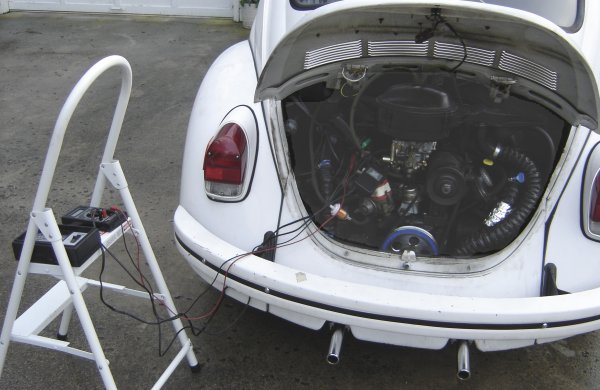Over several more iterations of pressure testing, I was able to get consistent results. The only way to get completely repeatable results is to have the cylinder on the up-stroke. That seems to be the position where the rings seal the best (with the engine cold, of course). With the clyinder at TDC or in the down-stroke, sometimes something happens during that test that changes the results (the rings flip to the ascending state, maybe), but whether or not it does this depends on factors that I can figure out. Now that I have a consistent procedure, sometime I'll do the test again with the engine warm.
Over the past week I got the engine put back together, and yesterday I took time to do a few more things before getting ready to run test the engine:

I installed quick-release decklid hinge pins. For those thinking about doing this, it's very important to read the instructions. The quick-release pins are larger than the stock ones. You need to ream out the hinges with a 1/4" drill bit for it to fit. I found that wiggling the drill around after drilling the hole made the ends of the pass more open and the pins went in much easier.
I also went ahead and installed new hoses on the right side of the engine. That's standard 2-inch cold-air duct from the auto parts store with a spiral metal reinforcement. I got tired of the Aluminum foil ones not fitting and bending every time I touched them.
And I re-set the timing and then ran the engine and attempted to do a full tune-up procedure. Here's ready to test:

Setting up the carb was ultimately unsatisfactory. The engine definitely ran smoother, and the exhaust was noticably cooler than it has been. However, I think there's a chance I might have a leak in the intake system somewhere, which causes the engine to run erratically and makes it hard to adjust. I have some work to do today, but with a little luck I'll be able to test that this afternoon.